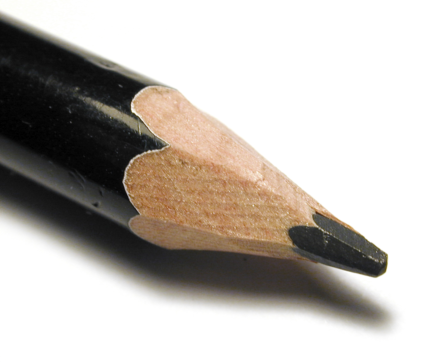Testing Your Donation Form Part 2: Designing Your Test

Note: This is the second in a series of posts about usability testing your  website from guest author Brandon Granger, Senior Interaction Designer for Blackbaud. Brandon has crafted user experiences and conducted user research in the nonprofit space for 12+ years.
website from guest author Brandon Granger, Senior Interaction Designer for Blackbaud. Brandon has crafted user experiences and conducted user research in the nonprofit space for 12+ years.
In the first part of this series, we talked about why you should test your website and donation form with real supporters. Today, we want into get into the nitty-gritty of creating a solid usability test plan which hinges on two key things.
#1: What questions do I want to answer about my website?
Your first reaction to this question may be “I just want to answer: Is my website easy to use?” Fair enough, but that is very subjective to answer especially if you are already fighting a battle of opinions at your organization. Real usability data can cut through the assumptions to the facts very quickly but you need to start with questions which can be measured objectively.
Some good examples:
- How quickly can visitors discover my site’s purpose?
- How quickly can visitors understand where donations go?
- What questions do they ask before making a donation?
- Can they answer those question easily?
- How easily can donors find where to make a donation?
- How easily can donors complete the donation form?
- Do donors feel safe providing credit card or other private information?
- Am I using language on my site which is confusing or jargon?
- Do I have content on my site which is irrelevant or distracting?
- Is my site’s navigation optimized for my supporters’ most important tasks?
If you want to test new pages or new features on your site, your questions may be much more targeted:
- Will website visitors be able to find our annual report?
- Will donors be able to find the registration page for our annual gala?
- Will donors understand how to make a recurring gift made in honor of a family member?
- How easily can donors sign up for your email newsletter while making a gift to a specific campaign?
#2: How do I create tasks which will answer my questions?
Then you create testing tasks which answer your questions. Only by directly observing real users complete real tasks will you know if your website’s design really works. The rationale of testing is that if you watch five donors complete your donation form then you will know how easy your donation form is to use. Makes sense, no?
Your testing tasks should cover the most important goals of your supporters (e.g., understanding the purpose of site, finding specific content, making a gift). Creating the right tasks for testing is arguably the most crucial part of a good usability test. The trick is to keep your testing tasks simple and realistic.
Some tips for creating tasks…
- Keep ’em goal-oriented: Since your users come to your website with goals in mind (e.g., I want to support this organization) and not tasks (e.g., I want to find a “donate” button), your tasks should be very goal-oriented.
- Talk like the amateur, not the pro: Nothing is more important than making sure your tasks match your donor’s language. Not the language of your organization or website.
- Avoid overly vague tasks: It’s tempting to do a “Go to the website and tell us what you think…” tasks, but your tasks should have a specific outcome. You can get plenty broad feedback during testing, but participants should always be driving somewhere.
Examples of good tasks:
- “You want to support this organization because you believe in their mission. You want to make a gift of $50.00 every month for the next year for a total of $600.”
- “You want to register for a 2012 Black Tie Event with your spouse or partner.”
- “You want to support the building of the new Science and Arts building by making a $1000 gift. While you are on the site, you want to sign up to receive news from our organization.”
Examples of not-so-great tasks:
- “You want to make a recurring gift for the annual fund…”
- “You want to click on the X button…”
- “Find the X link for the Y fund by using the Z field…”
- “You want to find the page named…”
Why harp on good versus bad tasks? Because bad tasks mean bad data. Even experienced designers can sink their own test by using tasks that inadvertently tell the participant how to use the site, ask them to do tasks they would never do in normal life, or confusing them from the outset which will make the site appear unfairly unusable.
The easiest way to find out if your tasks are solid. Just read them to your first couple of participants and then ask them, “So what do you think you are trying to do on the website in your own words?”. You’ll know pretty quick if you’ve nailed it. If not, just tweak the task during testing and keep rolling.
Now that you know the why and how of creating usability testing tasks, here are some great ones I recommend for your first test.
| Scenario: You are considering whether you want to donate to our organization, but first you want to do some basic research about the organization before making a donation.
Task #1: First, you want to find out the purpose of the organization. Take as much time as you need researching the site and tell me what this organization does. Task #2: Now, you are considering making a donation. You want to use the website to find out specifically how your donation will be used by this organization. Task #3: You are ready to make a donation. Make a $10 donation to this organization using your credit card number 4111 1111 1111 1111, expiration date 01/15, and CVV 456. |
If you’ve never seen supporters use your site, watching them complete these three tasks will be priceless to you. There is nothing more riveting than watching someone try to use your design for the first time.
What’s next?
In the next installment, you will learn how to recruit users and run your test then we will wrap with how to address the issues you find in your testing.
Can’t wait until next time?
If you are really interested in going deeper today, there are many great resources for usability testing on the web, but one book in particular is excellent for first-time usability testers: Steve Krug’s Rocket Surgery Made Easy: The Do-It-Yourself Guide to Finding and Fixing Usability Problems. A lean, quick read I’ve recommended repeatedly.
